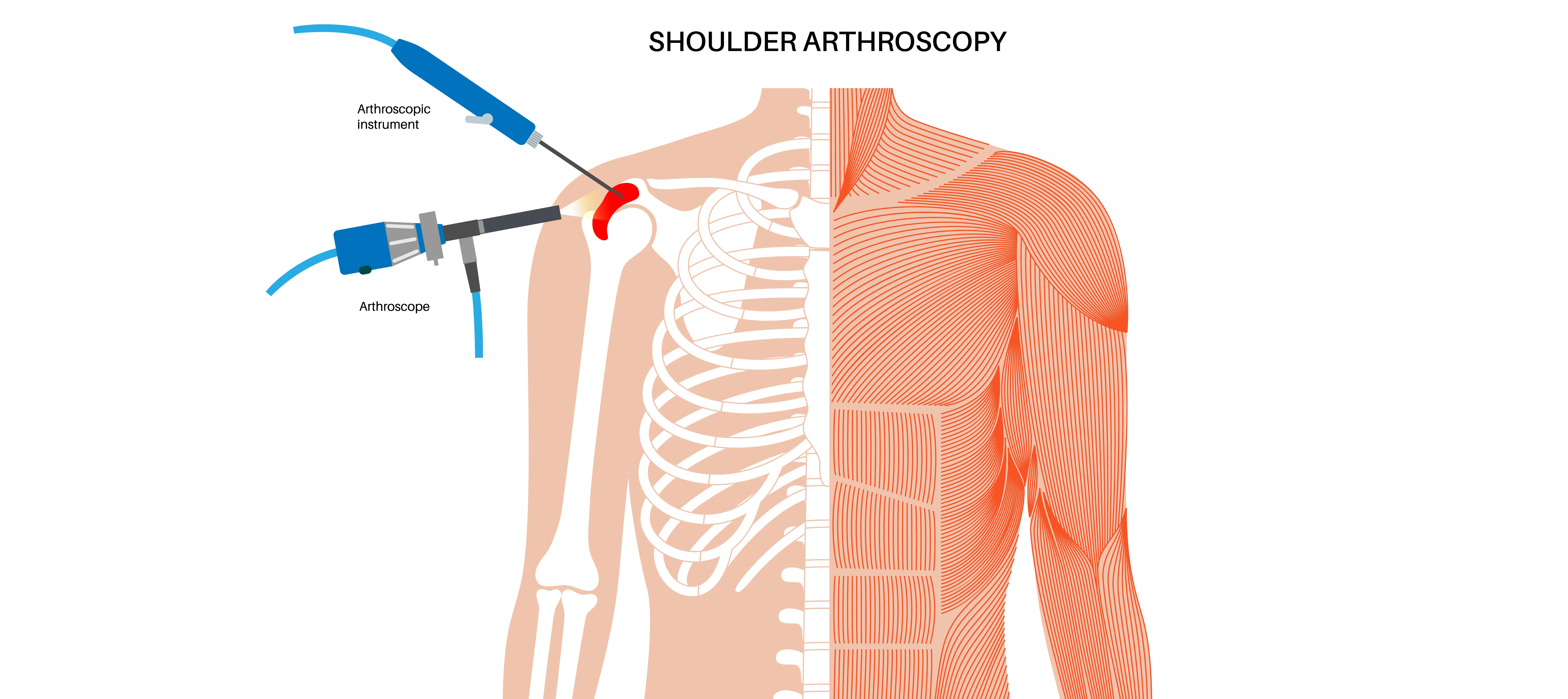
Shoulder arthroscopy is an innovative surgical technique that involves minimal invasiveness, making it a practical option for treating shoulder disorders. Arthroscopy is a minimally invasive technique, unlike open surgery, which requires large incisions. It enables the surgeon to have more straight, better visualization of the joint through the small incisions and takes a shorter time to heal than the large surgical incisions.
Shoulder arthroscopy is a surgical technique that allows the orthopedic surgeon to examine, diagnose, and treat the internal shoulder joint effectively. The procedure involves surgery carried out on the shoulder region with the help of an arthroscope – A thin wired instrument with light and a camera. The camera provides live images of the shoulder joint on a monitor, meaning that the surgeon does not need to make extensive incisions to assess the problems quickly.
Also Read: Top 10 Orthopedic Doctor In Delhi
Shoulder arthroscopy offers several notable advantages over traditional open surgery, including:
Minimally Invasive Nature: It does not involve large incisions; instead, it involves less than half an inch of incisions. This has made it bear the name ‘keyhole surgery.’
Reduced Pain: Finding ways to reduce the size of incisions reduces trauma on the adjoining tissue, consequently reducing post-operative pains.
Minimal Scarring: In this case, they found that minor cuts leave behind slender, less apparent scars than large surgical openings.
Faster Recovery: Most of the time, the damage and inflammation to tissues are less, so full functions are recovered and restored faster.
Lower Risk of Complications: Arthroscopy is less invasive, which means that as compared to open surgery, it has minimum chances of the following complications:
Improved Surgical Outcomes: Improved patient encounter outcomes include:
Enhanced Joint Function: Shoulder arthroscopy is minimally invasive, which results in specific treatment of the problematic zones and enhances the function.
Shorter Hospital Stay: This is because the surgery is minimally invasive so that most patients can be discharged on the same day.
Also Read: Shoulder Arthroscopy Recovery Time: What to Expect and How Long It Takes
Shoulder arthroscopy is effective for addressing a variety of shoulder issues, including:
The rotator cuff is a group of four muscles and their tendons that stabilize the shoulder joint. Tears can be partial or complete, often leading to pain and weakness and restricting the range of motions possible in the injured area. Arthroscopy enables surgeons to fix these tears, like other injuries, which are repaired by suturing the tendons to the bone.
The labrum is a ring-shaped cartilage that acts as a shock absorber and helps anchor the head of the scapula. Pain: the feeling of instability and the shoulder ‘coming out’; the arthroscopy allows the surgeon to shave or reattach the damaged cartilage.
Shoulder arthritis causes inflammation of the joint of the shoulder, thus making it painful, stiff, and not very flexible. Arthroscopy can also be employed to trim out the damaged tissue, to smoothen the roughened interphase, and to give comfort.
This condition occurs when shoulder tendons, responsible for the rotator cuff, detach and become trapped between shoulder bones, leading to pain and restricted mobility. This can help by carrying out the surgical procedure of arthroscopy, where the inflamed bursa can be removed, or the tendons that have been injured can be repaired.
This condition results in shoulder joint stiffness and pain and makes any movement in the affected area hard. Arthroscopy is a way in which surgery is done to free the stiff capsule around the shoulder.
Also Read: Top 5 Shoulder Exercises At Home: Relieve Pain And Increase Flexibility
Preparing for shoulder arthroscopy involves several essential steps to ensure the procedure goes smoothly:
Also Read: Cost Of Shoulder Arthroscopy in Delhi, India
Here’s a look at what happens during shoulder arthroscopy:
Also Read: Can arthroscopic surgery be used to treat a common sports injury?
Recovery from shoulder arthroscopy typically involves:
Also Read: How much does a shoulder replacement cost in Delhi, India?
While shoulder arthroscopy is generally safe, potential risks include:
Also Read: What is Shoulder Arthroscopy?
Shoulder arthroscopy is a rather complex and least invasive technique for managing different shoulder pathologies. Given this, it is a valid option to open surgery as a minimally invasive procedure with all the advantages of shorter operations, fewer adverse effects, and better patient results. The best results are usually associated with the right approach to the surgery, adequate knowledge on the part of the patient, and meticulous post-surgery care.
By selecting a skilled orthopedic surgeon and following a comprehensive rehabilitation program, you can effectively manage shoulder issues and return to your daily activities with minimal discomfort and greater mobility. If you have shoulder pain or dysfunction, you should also discuss it with an orthopedic surgeon to determine if you are fit for shoulder arthroscopy.
Staying abreast with the latest information is the best way to combat diseases in early stages and live a healthy life. Read the latest news & updates here to learn about the recent advancements in joint care and therapeutics.


